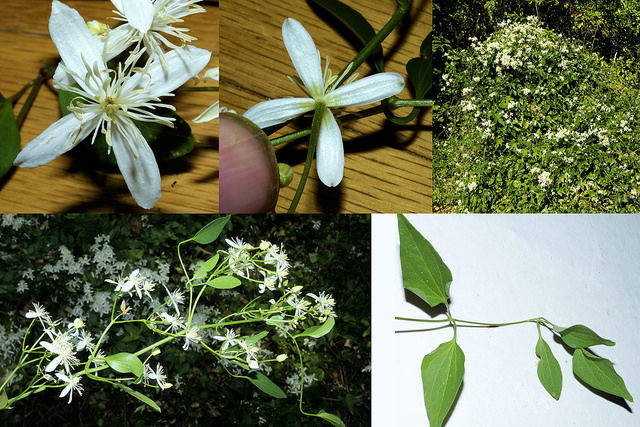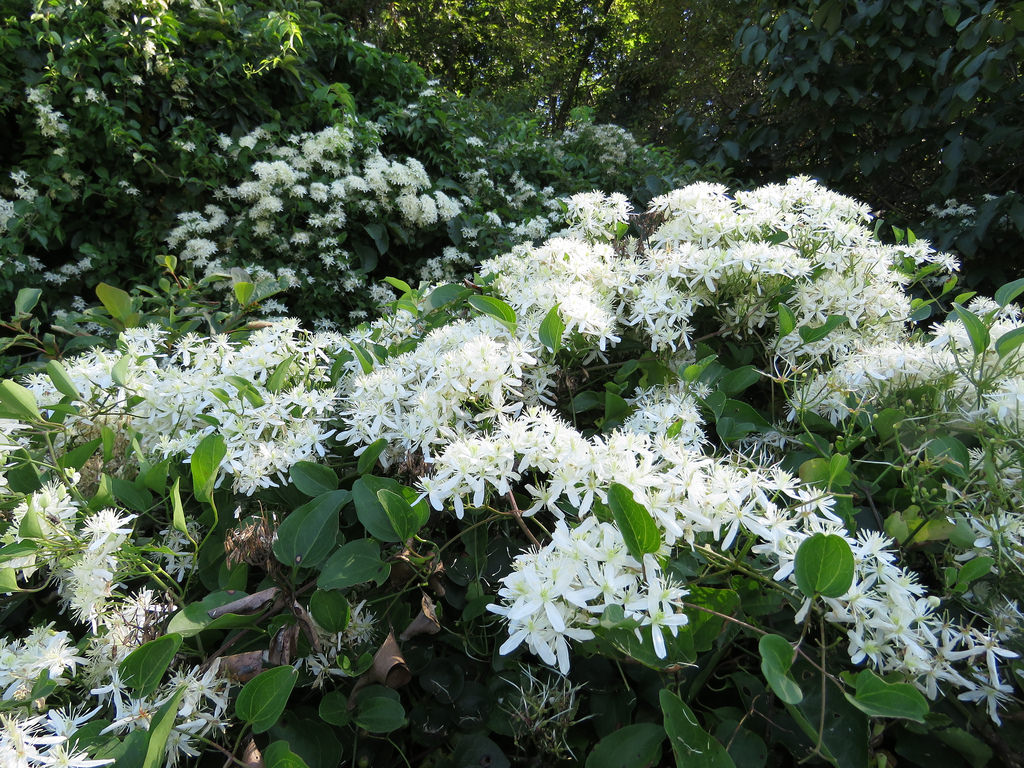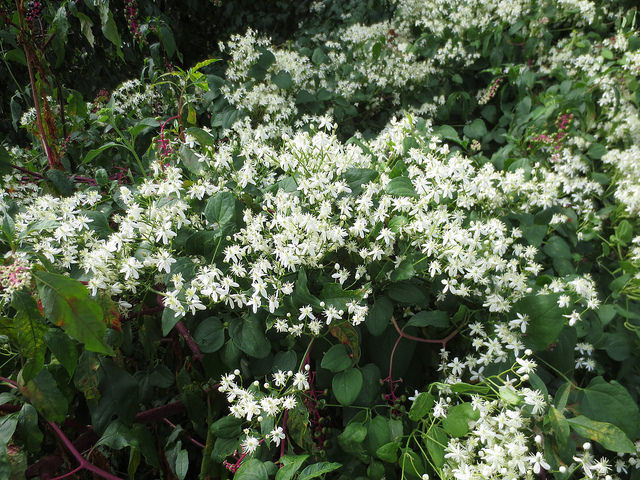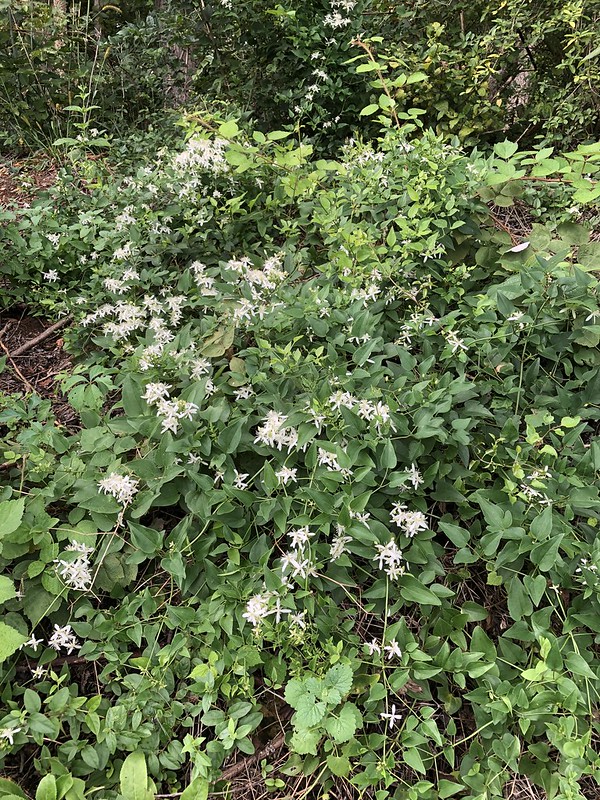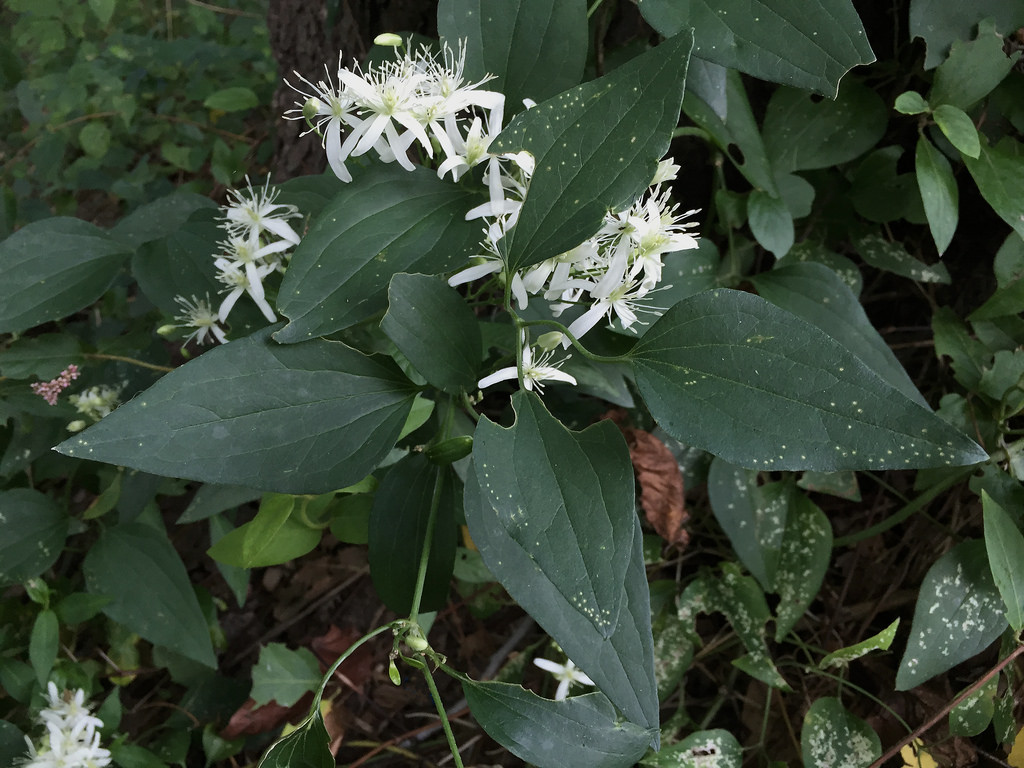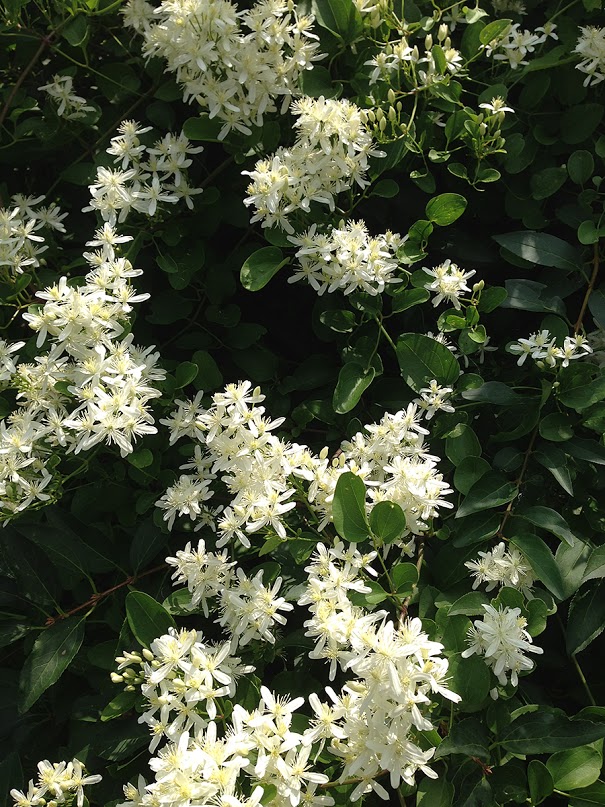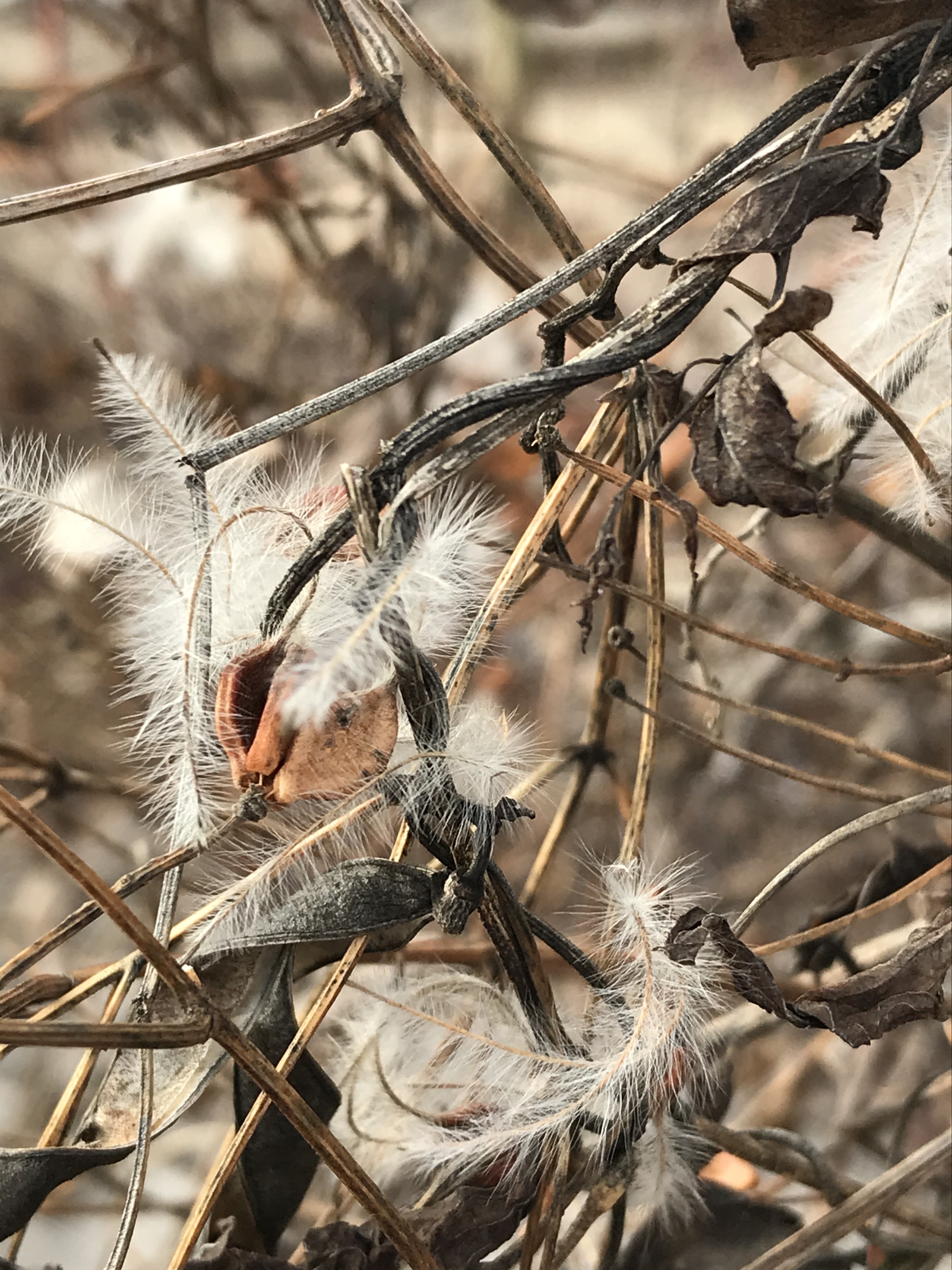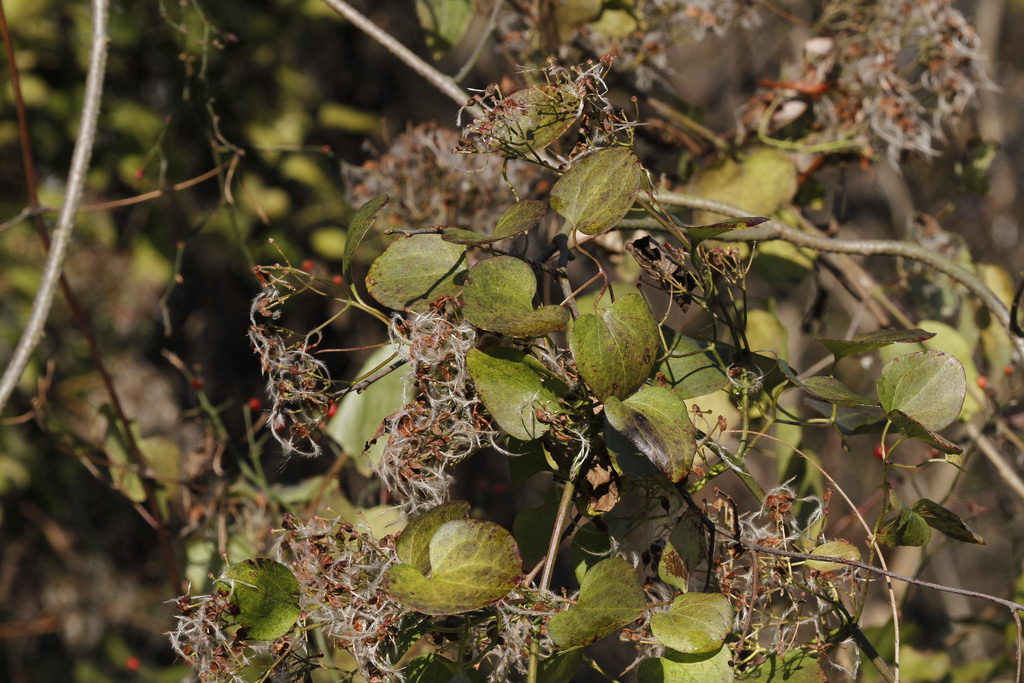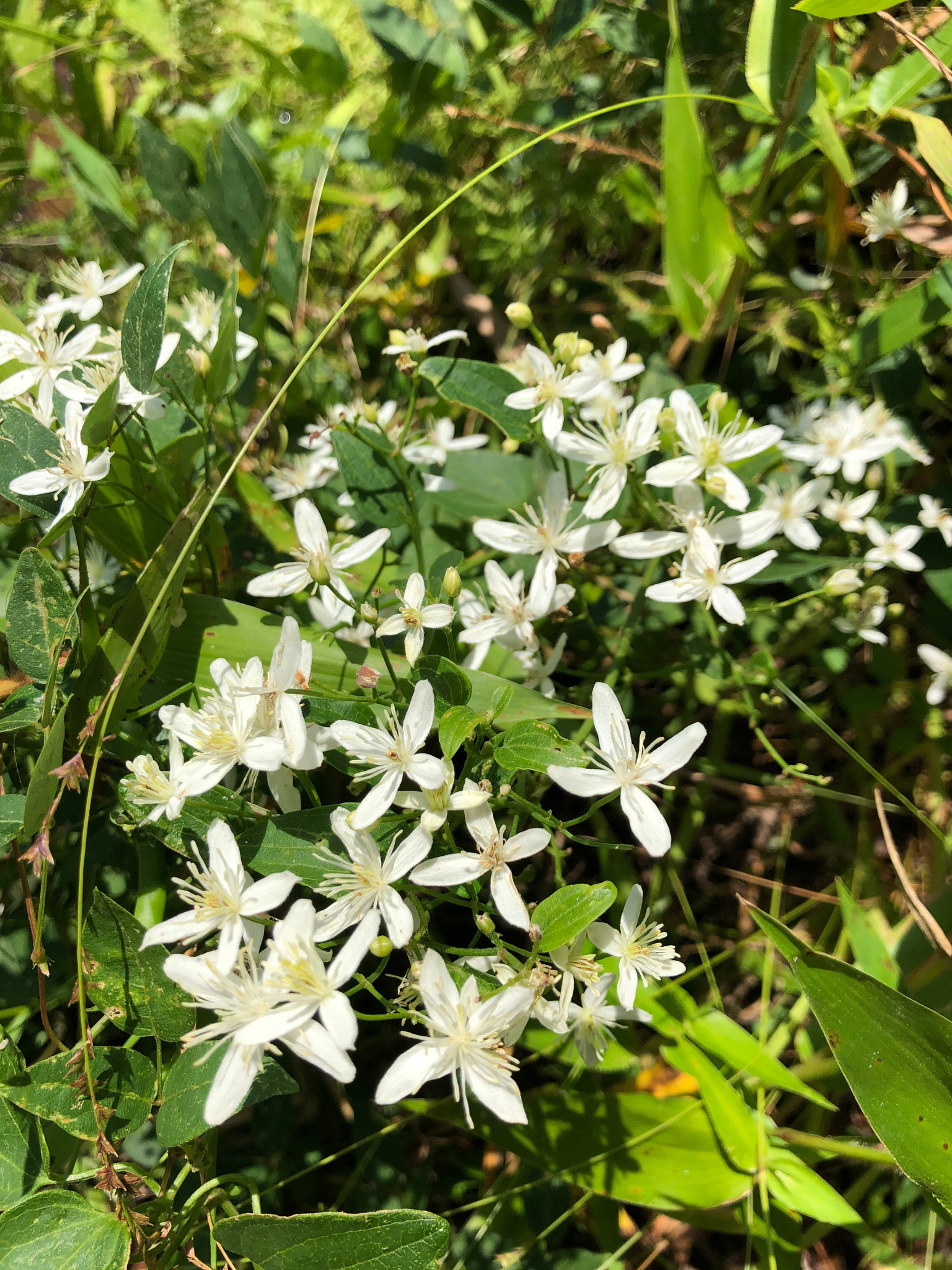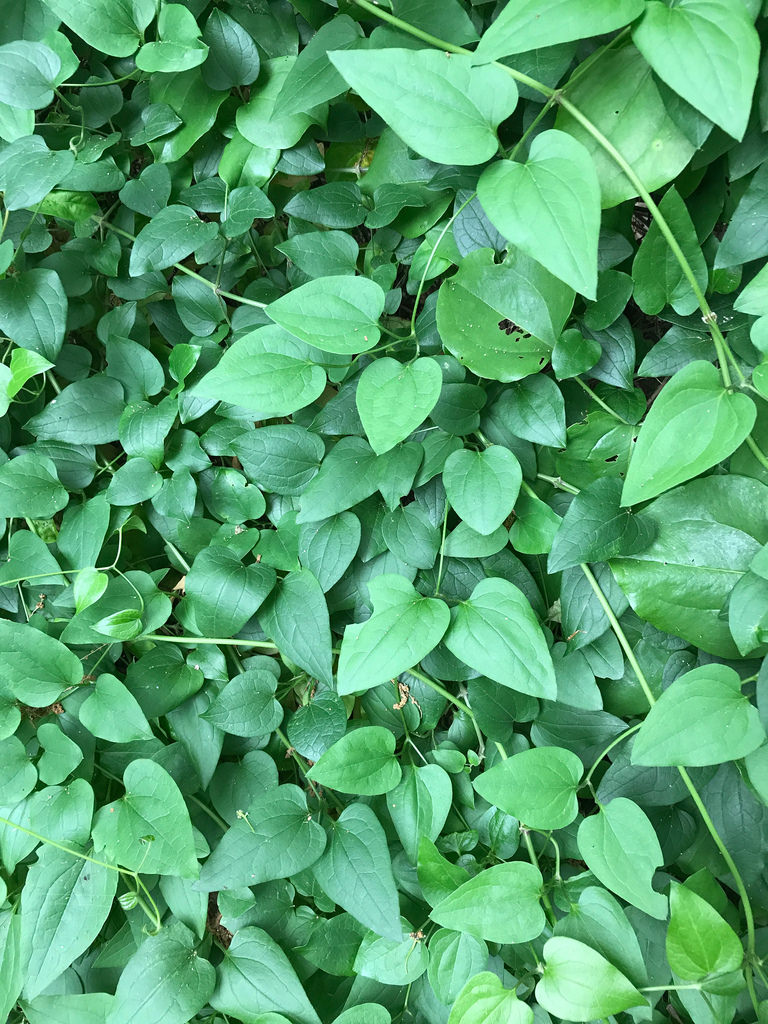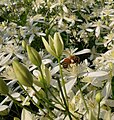Map Snapshot
























433 Records
Status
Sweet Autumn Virginsbower is an invasive plant from Asia. This exotic clematis has escaped from the plant trade and has become established across most of Maryland. Sweet Autumn Virginsbower forms dense mats of either climbing or creeping vines that choke out all other plants that are growing underneath.
Description
Superficially resembles our native Virginia Clematis but the leaves of our native clematis are typically cleft or coarsely toothed while the leaves of Sweet Autumn Virginsbower are smooth and entire. The seeds of Sweet Autumn Virginsbower often appear more feathery than the smoother seeds of Virginia Clematis.
Where To Find
Sweet Autumn Virginsbower grows along hedgerows and forest edges and other open or semi-shaded habitats.
Seasonality Snapshot
Source: Wikipedia
| Sweet autumn clematis | |
|---|---|

| |
| Blooming vine | |
| Scientific classification | |
| Kingdom: | Plantae |
| Clade: | Tracheophytes |
| Clade: | Angiosperms |
| Clade: | Eudicots |
| Order: | Ranunculales |
| Family: | Ranunculaceae |
| Genus: | Clematis |
| Species: | C. terniflora
|
| Binomial name | |
| Clematis terniflora | |
Clematis terniflora (sweet autumn clematis, sweet autumn virginsbower) is a plant in the buttercup family, Ranunculaceae. It is native to northeastern Asia (China, Japan, Korea, Mongolia, Siberia and Taiwan).[1] It was introduced into the United States in the late 1800s as an ornamental garden plant, and has naturalized in many of the eastern states. It is considered a Category II invasive plant in north and central Florida[2] and some other eastern states, meaning it is invading native plant communities but has not yet seen as displacing native species.[3][4]

Description
[edit]Clematis terniflora is a vine with opposite, pinnately compound leaves, on climbing stems. The flowers are white, borne in fall.[3] The blooms are nicely fragrant and visited by bees. In late fall, the fertilized flowers become fruit (seed) clusters of 5-6 fruits connected at the heads and each having a long white tail. As these dry, the color of the fruits fade and the tail becomes feather-like. In the spring the fruits detach and are dispersed by wind.
-
Honeybee on sweet autumn clematis
-
Clematis terniflora seed clusters on plant
-
Clematis terniflora single seed cluster, early
-
Clematis terniflora single seed cluster, late
-
clematis on brick wall
Cultivation
[edit]Prefers full sun, but will prosper and bloom in partial shade. These woody-stemmed plants can be pruned in fall or early spring to within a couple of feet from the ground, and will vine up fence, trellis, arbors (or other plants) to heights of 10 to 30 feet. Can also be allowed to sprawl along the ground as a dense ground cover. Blooms on new growth. No serious insect or disease problems. Does not require fertilizer or frequent watering, although will benefit from a low nitrogen fertilizer such as 5-10-10 in spring. Considered deer resistant.[3][5]
References
[edit]- ^ "Clematis terniflora". Flora of China. Retrieved 12 May 2013.
- ^ "List of invasive plant species" (PDF). Florida Exotic Pest Plant Council. 2019.
- ^ a b c Clematis terniflora Missouri Botanical Garden
- ^ Sweet Autumn Virginsbower (Clematis terniflora) Invasive Plant Atlas of the United States
- ^ Sweet autumn clematis The Morton Arboritum, Lisle, IL.
External links
[edit]- Clematis terniflora Floridata Plant Encyclopedia
- Sweet Autumn Clematis (Clematis terniflora) Trees, Shrubs, and Woody Vines of North Carolina.
